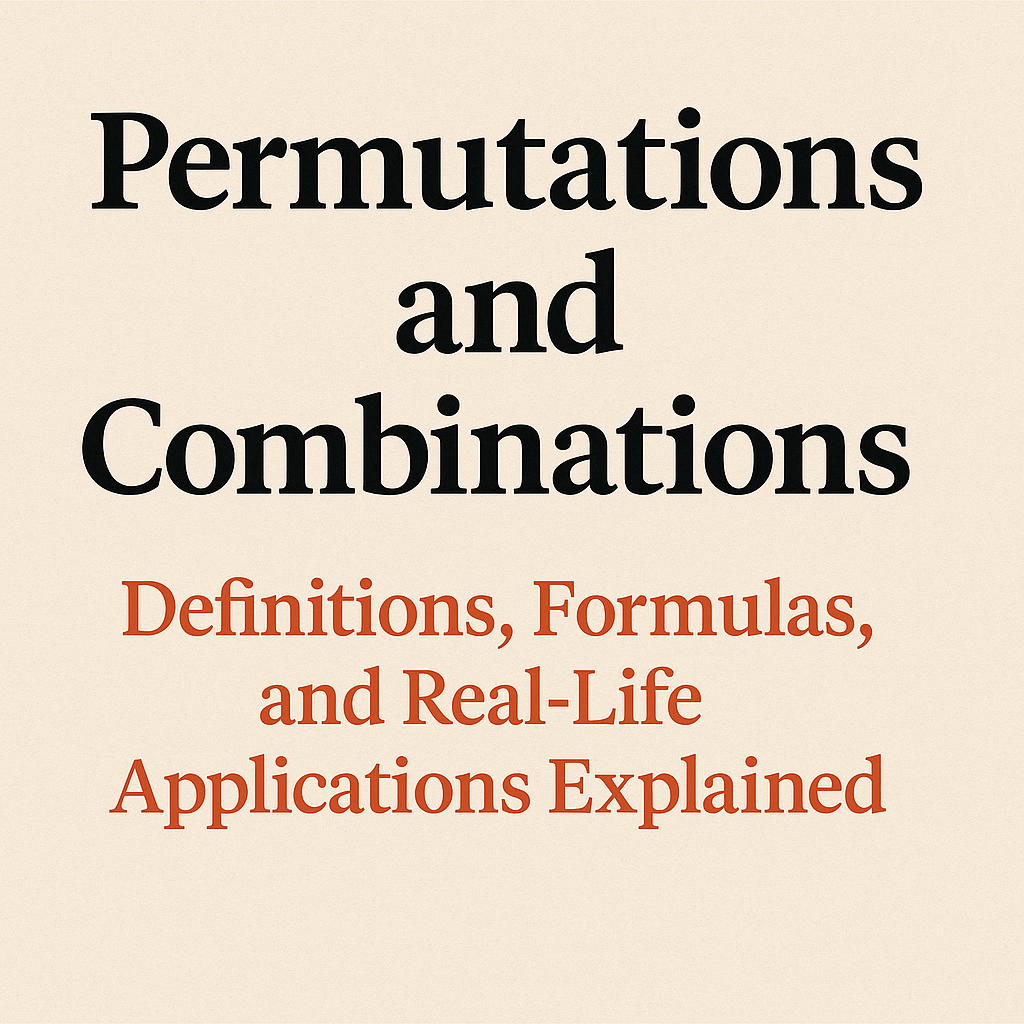Permutations and Combinations Explained
Permutations and combinations are foundational concepts in combinatorics and probability theory. They help us count and calculate the number of possible outcomes or arrangements in various scenarios, especially when dealing with large sets of data or events. Understanding these concepts is crucial for solving problems in statistics, mathematics, and computer science.
Understanding Permutations
A permutation is an arrangement of items in a specific order. The order of arrangement matters in permutations. For example, the arrangements ABC and BAC are considered different permutations.
The number of permutations of n different objects taken r at a time is given by:
P(n, r) = n! / (n – r)!
Example:
How many different 3-letter arrangements can be formed from the letters A, B, C, D?
P(4, 3) = 4! / (4 – 3)! = 24 / 1 = 24
Types of Permutations:
- Without repetition (standard case)
- With repetition (each item can be reused)
Understanding Combinations
A combination is a selection of items without considering the order. The combinations ABC and BAC are considered the same.
The number of combinations of n items taken r at a time is given by:
C(n, r) = n! / [r!(n – r)!]
Example:
How many ways can we choose 3 fruits from a basket of 5?
C(5, 3) = 5! / [3!(5 – 3)!] = 120 / (6 * 2) = 10
Types of Combinations:
- Without repetition (standard case)
- With repetition (items can be selected more than once)
Key Differences
- Permutations consider the order of selection, while combinations do not.
- Permutations have more outcomes than combinations when using the same set.
- Use permutations when the position matters (e.g., race results), and combinations when it doesn’t (e.g., lottery numbers).
Real-Life Applications
- Scheduling and timetabling
- Cryptography and coding theory
- Probability and statistics
- Games and puzzles
- Biological sequences and DNA analysis
Conclusion
Mastering permutations and combinations provides powerful tools for solving problems involving counting and probability. Whether in academic studies or practical applications, these concepts enable a structured approach to evaluating possibilities, making informed predictions, and understanding complex systems.



